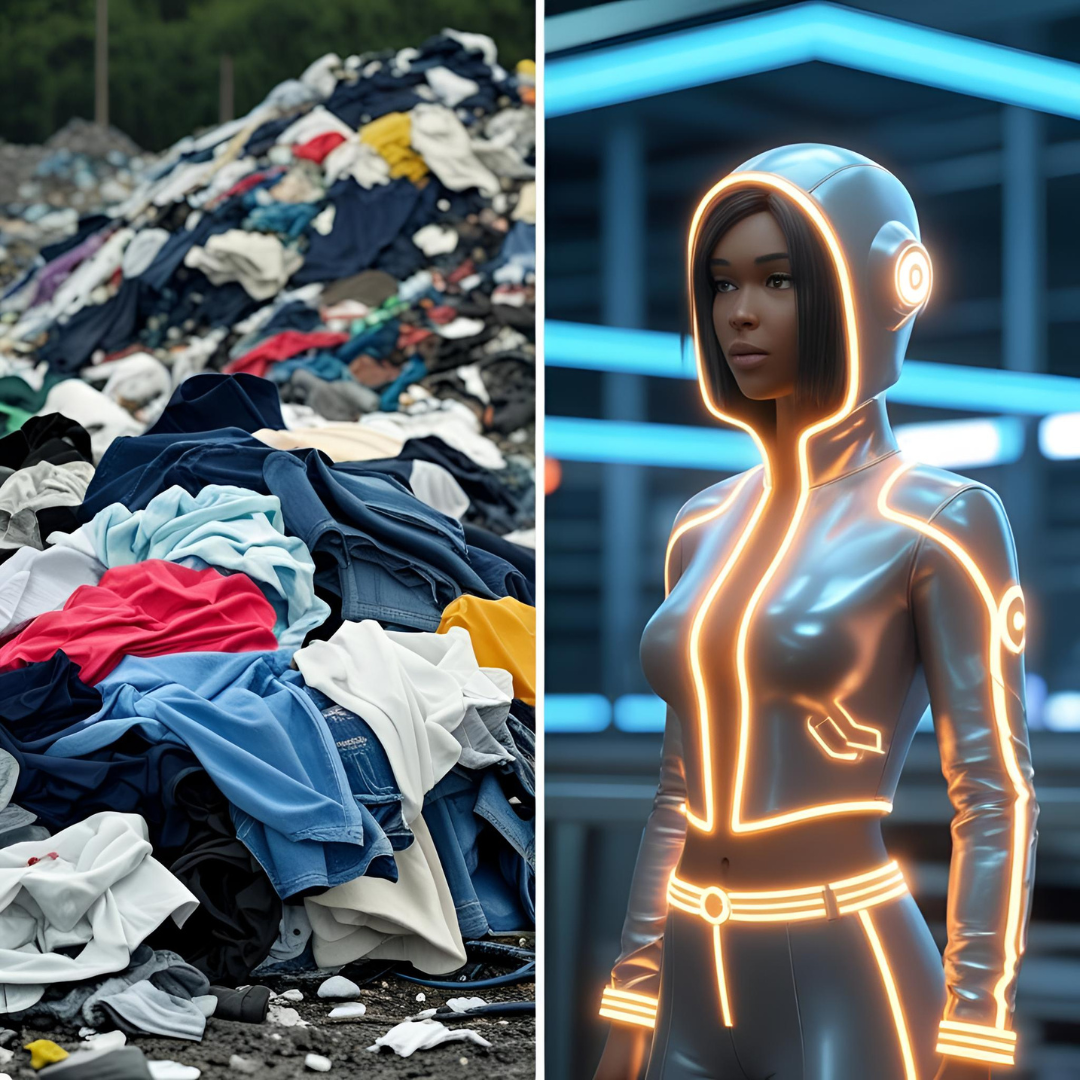Fashion is one of the most polluting industries in the world. From water-intensive cotton farming to carbon-heavy global logistics, the environmental cost of a single garment is staggering. In recent years, however, a new frontier has emerged: digital fashion. As designers and consumers experiment with virtual clothes worn in gaming platforms, social media, and the metaverse, an important question arises — is creating fashion for digital spaces more sustainable than physical production?
This growing niche offers exciting possibilities for creative expression without the physical waste. But can it truly serve as a greener alternative, or does it simply shift the footprint to a different format?
The Environmental Cost of Traditional Fashion
Before diving into the potential benefits of digital fashion, it’s important to understand the current reality. The traditional fashion industry is responsible for:
- Around 10% of global carbon emissions
- Over 20% of wastewater globally
- The production of 92 million tons of textile waste annually
- Massive overproduction — estimates suggest that 30-40% of clothes made are never sold
Add to this the growing problem of ultra-fast fashion, where trends last mere days and garments are treated as disposable, and the environmental outlook becomes even more dire.
What Is Digital Fashion?
Digital fashion refers to clothing designed and worn entirely in virtual spaces. These garments are:
- Created using 3D design software (e.g., CLO3D, Blender, Marvelous Designer)
- Sold as digital assets (often as NFTs or virtual skins)
- Worn in digital environments like Instagram, TikTok, Snapchat, Roblox, Zepeto, or virtual meetings
- Sometimes “fitted” onto photos of real people or avatars via AR (augmented reality)
No raw materials, dyes, shipping, or landfill — on the surface, it sounds like a win for sustainability. But what are the hidden costs?

Energy Costs in the Digital Realm
Although digital fashion eliminates fabric waste and emissions from shipping and dyeing, it’s not without impact. The energy required to design, render, and store digital garments — especially when blockchain or NFT technologies are used — can be significant.
- 3D rendering and real-time fitting simulations are resource-intensive tasks.
- NFT-based garments (used in some digital fashion platforms) involve blockchain transactions that consume large amounts of electricity.
- High-performance servers and cloud storage for virtual try-ons or AR filters also carry a carbon footprint.
However, these systems are rapidly evolving. Many fashion tech startups and blockchain platforms are migrating to greener infrastructure, such as proof-of-stake systems (e.g., Ethereum 2.0) and carbon-neutral data centers.
Replacing or Supplementing Physical Fashion?
The key factor in determining whether digital fashion is truly more sustainable lies in its function. Is it replacing physical garments or simply adding another layer of consumption?
- Substitute Use: When a consumer opts for a digital outfit instead of buying a real one — say, for a single Instagram post or a virtual meeting — the environmental savings can be substantial.
- Additive Use: If digital fashion becomes an extra layer of shopping, where users still buy physical clothes while also paying for digital looks, then the ecological benefit becomes marginal.
Currently, digital fashion is still mostly additive, but that is changing. As virtual worlds like Decentraland, The Sandbox, Fortnite, and Meta’s Horizon Worlds evolve, consumers are beginning to treat virtual clothing as their primary mode of self-expression in those spaces.
Applications of Digital Fashion for Sustainability

1. Reducing Sampling and Prototyping Waste
One of the most promising uses of digital fashion is in the design and development stage of traditional fashion. Brands can:
- Create hundreds of virtual prototypes before making a single real sample.
- Conduct virtual fittings, reducing the need for physical shipping of samples.
- Use digital twins to simulate garments on diverse body types and movements.
This not only saves resources but also accelerates the product development cycle without sacrificing quality or fit.
2. Virtual Try-Ons and Reduced Returns
Digital fashion and AR-powered virtual try-ons can reduce the massive problem of e-commerce returns. Today, many online purchases are returned because the fit or style doesn’t meet expectations. With virtual garments, consumers can:
- See how items will look on their body or avatar
- Try various sizes, colors, and combinations instantly
- Make more informed purchases, reducing waste from returned goods
This is especially effective when paired with AI recommendation engines and body-scanning technology that fine-tune garment suggestions based on the user’s data.
3. Promoting Slow Fashion Through Creative Expression
One of the psychological drivers of fast fashion is the constant need for novelty and identity exploration. Digital fashion offers an infinite canvas for self-expression without material cost:
- A consumer can wear a different digital outfit every day online without buying anything new in real life.
- Influencers and content creators can maintain visual novelty without overconsumption.
- Brands can experiment with bold ideas virtually before launching physical lines.
By decoupling creativity from material production, digital fashion encourages people to reimagine what it means to dress — and consume — in the modern world.
The Role of AI and Fashion Tech
Artificial intelligence plays a critical role in making digital fashion scalable and sustainable:
- AI algorithms generate real-time garment rendering with minimal energy
- Machine learning improves personalization and user experience in virtual try-ons
- AI enhances material simulations, reducing the need for physical swatches
- Predictive models help brands reduce overproduction by analyzing demand more accurately
When combined with ethical design principles, these tools become powerful allies in building a more conscious fashion ecosystem.
Ethical and Cultural Considerations
Digital fashion does present some ethical questions. Who has access to these tools? Will virtual clothes become status symbols just like luxury brands? What happens to craftsmanship and cultural heritage in a fully digital world?
To ensure digital fashion promotes inclusive, equitable sustainability, brands must:
- Open up access to tools and platforms for diverse creators
- Avoid replicating fast fashion business models in virtual form
- Collaborate with artisans and traditional designers to blend old and new knowledge
True sustainability is not only environmental — it’s also social and cultural.
Looking Ahead: A Hybrid Future
It’s unlikely that digital fashion will replace physical clothing entirely — at least not in the short term. People will still need clothes for the physical world. But the hybridization of fashion is inevitable. A future wardrobe might include:
- A minimal, high-quality physical collection
- A vibrant, expressive digital closet for virtual spaces
- Smart AR tools to bridge both worlds seamlessly
As consumer behavior shifts and technology matures, we may find that digital fashion becomes not just a supplement, but a sustainable strategy to slow down consumption, reduce waste, and reimagine the very nature of style.







